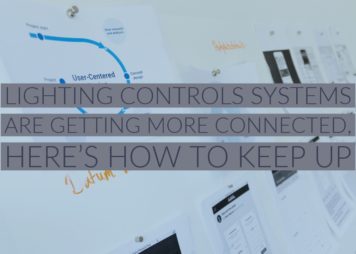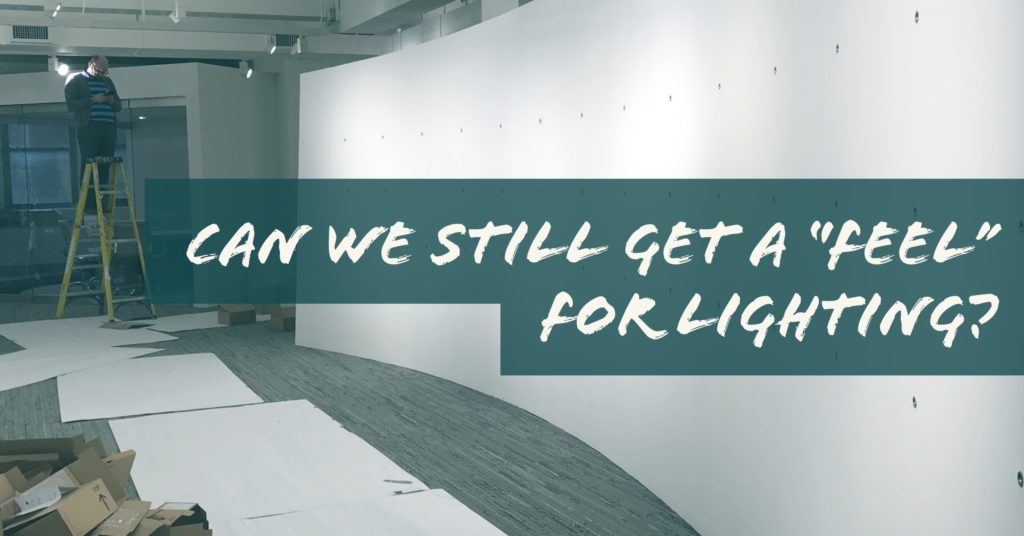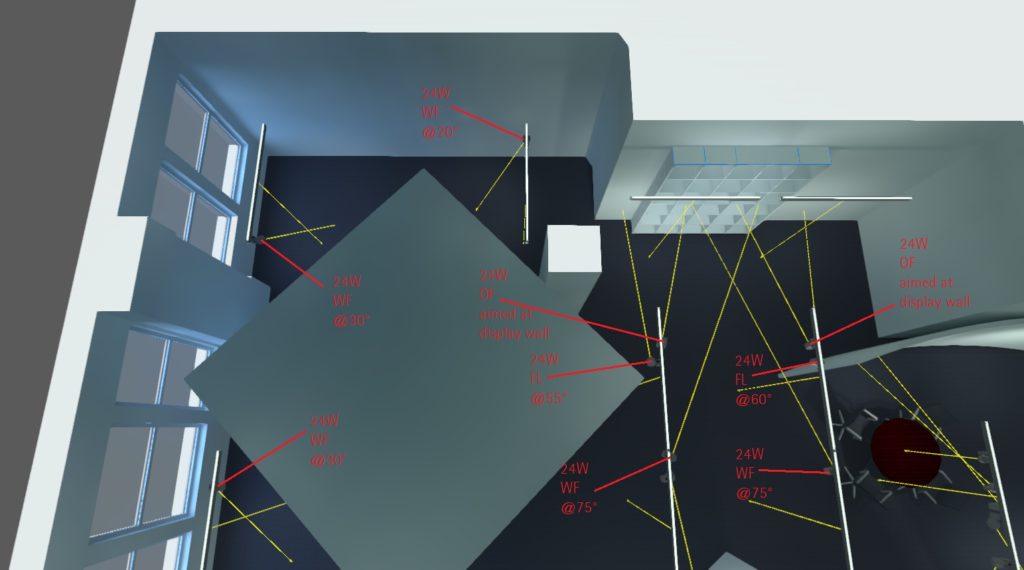Lighting Tips

Lighting Controls Systems Are Getting More Connected, Here’s How To Keep Up
Connected Lighting Is Here, Now What? Lighting control systems today are evolving as rapidly as...
Read Article
This week, I was working on a showroom project that relied pretty heavily on track lighting. Our manufacturer (who, for purposes of this article isn’t relevant) did a tremendous amount of preparation work, using calculation software to create a model for how the light would work in the space. This kind of preparation work is typical these days. Rendering software has gotten fast and accurate enough that it’s common for a lighting designer, engineer, sales rep, or manufacturer will generate a calculation to ensure proper light levels or give the client a feel for what the space will look like.

When I was focusing the lights I found myself along with the applications engineer (who did the calculations) doing our best to lay out the track heads per the plan as laid out by the photometric report. As we worked we saw that the stunning white walls we were lighting didn’t look exactly as the rendering had shown. I started to make adjustments, moving the fixtures closer or further from the walls on the track and adjusting their aim. Eventually the walls looked great, a happy client and a good looking installation. Never the less, my counterpart was frustrated. While the room looked better than his photometric report, he didn’t understand why the photometrics didn’t work exactly as planned.
This got me wondering…do we rely too heavily on photometric reports generated by computers?
I am old enough to remember a time when we worked without any computer generated reports at all. Before you click away, this is not an anti-technology argument. I don’t think that it’s critically important that students be able to calculated foot-candles on the working plain by hand from raw photometric data. In our day and age, speed is one of the most important parts of our work, and the technology speeds everything up.
At the same time, I remember the days of intuitively knowing what a 50W MR16 with an NSP reflector would do from 12 feet away. I came up from the live event world, where there was never enough time to get anything done. When we were focusing a gig, the LD would simply call out beam spreads, 26! 36! Two more 19s! She knew what they would do from a given position, intuitively, from experience. The rise of LED has meant a explosion in the possible outputs and light qualities coming from LED luminaires. A narrow spot from one manufacturer at 725 lumens will likely not look anything like a narrow spot at 800 lumens from another manufacturer, there are no common lamp specs to refer back to…so what has this done to intuition?
Going back to my showroom experience this week – within a few minutes of starting to focus the lights, I got a feel for what each beam spread would really do in terms of intensity and spread. Soon I was making more intuitive decisions on placement and focus and relying a little less on the pre-determined map. If you love light and love seeing what it does as you highlight spaces and objects, then you will come to find a sense for specified fixtures.
Here are some ways to get your intuitive lighting mojo back.
Play with samples.
Don’t hesitate in asking for them, trying them out and playing with them. Get a sense for how they will perform
Keep up with product iterations.
Has your favorite downlight manufacturer upgraded their chips? Take a look at them. Is your favorite track light now getting the latest and greatest high efficacy chip? Test it. Even if nothing has changed in terms of part numbers or catalog pages in a year or two there is a chance that the performance of the fixture has been upgraded due to newly available chipsets. It never hurts to re-examine even your old favorites.
Use photometrics as a guide, not a bible.
So, this is a tip I would advise with caution. If you’re specifying troffers for an open plan office, calculations are obviously necessary. But if you’re designing a gallery or a restaurant or any space where the arrangement of the room might shift and you’re using amiable fixtures, improvisation might be required. Build into your early budget extra lenses or reflectors to make sure you can improvise solutions not he fly. I also recommend that you play with installing and removing those lenses and/or reflectors before going to site, it’s all part of building comfort with the tools.
In the end, people who love light can quickly build an intuitive sense for the gear they have specified. We might not have the luxury of slow moving innovation any more where sources and lenses don’t change for years at a time, but we still know how to see a lighting tool, and learn to use it by feel.
Fill out the form below and we'll be in touch as soon as possible.